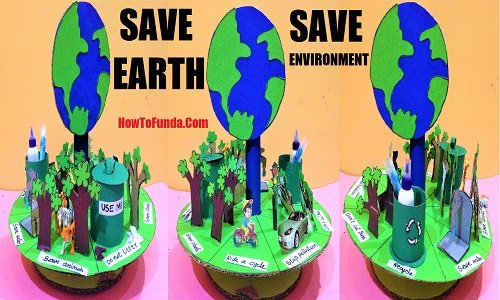Introduction:
Ladies and gentlemen, esteemed judges, and fellow advocates of planetary preservation,

Today, I am deeply honored to present a science project that transcends the boundaries of science and touches upon the very essence of our existence – the urgent need to save Earth.
As we gather here at this science exhibition, let us embark on a profound journey to understand the science behind saving our planet, its immeasurable significance for future generations, and the critical call to action that echoes through the cosmos.
Earth: Our Pale Blue Dot:
Our planet, Earth, is not just a celestial body in the vast expanse of the universe; it is our only home, a sanctuary of life, and a testament to the wonders of creation.
The Science of Saving Earth:
- Climate Science: Understanding Earth’s climate system is fundamental to addressing global warming, rising sea levels, and extreme weather events.
- Biodiversity and Ecosystems: The diversity of life on Earth is essential for ecosystem stability, human well-being, and the survival of countless species.
- Resource Management: Sustainable management of resources, from clean water to fertile soil, is crucial to maintaining Earth’s health.
- Renewable Energy: Transitioning to renewable energy sources, such as solar and wind power, is vital for reducing greenhouse gas emissions.
The Significance of Saving Earth:
- Climate Crisis: The Earth is facing a climate crisis with rising temperatures, melting ice caps, and severe weather events threatening human societies and ecosystems.
- Biodiversity Loss: Rapid biodiversity loss due to habitat destruction and pollution endangers ecosystems and food security.
- Resource Depletion: Unsustainable resource use depletes natural resources, impacting global food, water, and energy security.
Challenges and Opportunities:
The challenges are immense, from political and economic interests to the need for rapid and widespread changes in our way of life. However, the opportunities for change are equally vast through technological innovation, policy reforms, and individual and collective actions.
Our Role in Saving Earth:
- Sustainable Living: Embrace sustainable practices in our daily lives, from reducing waste to conserving energy and water.
- Advocacy: Advocate for policies and actions that mitigate climate change, protect biodiversity, and promote sustainability.
- Education: Educate ourselves and others about the urgent need to save Earth and the potential for a more sustainable future.
- Community Engagement: Engage in local environmental initiatives, conservation projects, and clean-up efforts.
Conclusion:
In conclusion, saving Earth is not just a science project; it is the defining challenge of our time. It compels us to recognize our interconnectedness with the planet and the profound responsibility we bear for its well-being.
As we explore the science of planetary preservation, let us be inspired by the fragility and resilience of our pale blue dot

